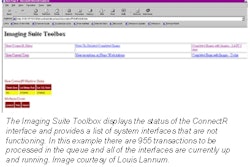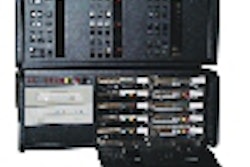SALT LAKE CITY - Neural networks are all the rage in computer-aided diagnostic (CAD) tools. A group of researchers at the Medical College of Wisconsin in Milwaukee believe that the use of a Bayesian network may have advantages over neural nets.
At today’s SCAR meeting, Dr. Charles Kahn, Jr., professor of radiology and medical informatics and director of information and decision sciences at the college, outlined the use of a Bayesian network in the creation of a tool for the diagnosis of primary bone tumors that he and his research team developed.
In Bayesian networks, also known as belief networks, each variable has two or more possible states associated with its probability values. And, for each variable, the probability values sum to 1.
This allows each variable in the net to be set completely, partially, or left as unknown. Thus, each node value can represent a physician’s current state of knowledge and certainty. Kahn said the connections between the variables represent direct influences, expressed as conditional probabilities, such as sensitivity and specificity.
According to Kahn, the inherent strength of a Bayesian network is its capability, unlike a neural net, to "express the relationships between diagnoses, physical findings, laboratory test results, and imaging study findings." He noted that Bayesian network techniques have been applied to MR diagnosis of liver lesions, selection of imaging procedures for patients with suspected gallbladder disease, and mammographic diagnosis.
Kahn’s group constructed a tool called OncOs that was modeled on a Bayesian network and designed to represent diagnostic information about solitary skeletal lesions. The first version of the tool differentiates among 10 solitary lesions of the appendicular skeleton. It also incorporates the patient’s age, sex, and 14 radiographic characteristics, such as the involved bone and the lesion’s location.
The group acquired conditional probability data about musculoskeletal lesions and bone tumors from several reference texts, and then used a freeware inference shell (HuginLite 5.4, Hugin A/S, Aalborg, Denmark) to create and run the model.
The team conducted a usability study of the tool with five medical students who had received limited training in the radiographic features of bone tumors. The researchers selected 28 cases from teaching atlases and had four students review five cases each and one student review eight cases. The students then encoded the cases into the OncOs tool.
On the basis of the input provided by the test group, the OncOs identified the correct diagnosis in 19 cases (68%) and included the correct diagnosis among the two most probable diagnoses in 25 cases (89%), said Kahn.
The research group plans on further testing and refining of the model, as well as integrating the OncOs database into a Bayesian network-based interactive learning tool. For further information about the group’s work, go to http://www.mcw.edu/midas/research.html.
By Jonathan S. Batchelor
AuntMinnie.com staff writer
May 4, 2001
Related Reading
Computer keeps up with clinicians for diagnosing pulmonary emboli, July 20, 2000
Finnish team searches for better mammography CAD system, June 30, 2000
Breast lesion classification may improve with US technology, January 5, 2000
Click here to post your comments about this story. Please include the headline of the article in your message.
Copyright © 2001 AuntMinnie.com



















